How To Mix Skin Tone Paint
I'thousand back with more color mixing! Concluding week nosotros mixed secondary and tertiary colors (bank check out this video) and today nosotros are mixing peel tones using main colors! This is pretty sophisticated stuff, and hopefully I do a adept chore of explaining the concepts of mixing browns in the video below. Don't be intimidated, though, because you will 100% be successful in mixing beautiful browns! The nuance is in getting the right shade and tone, and that's where color theory comes into play.
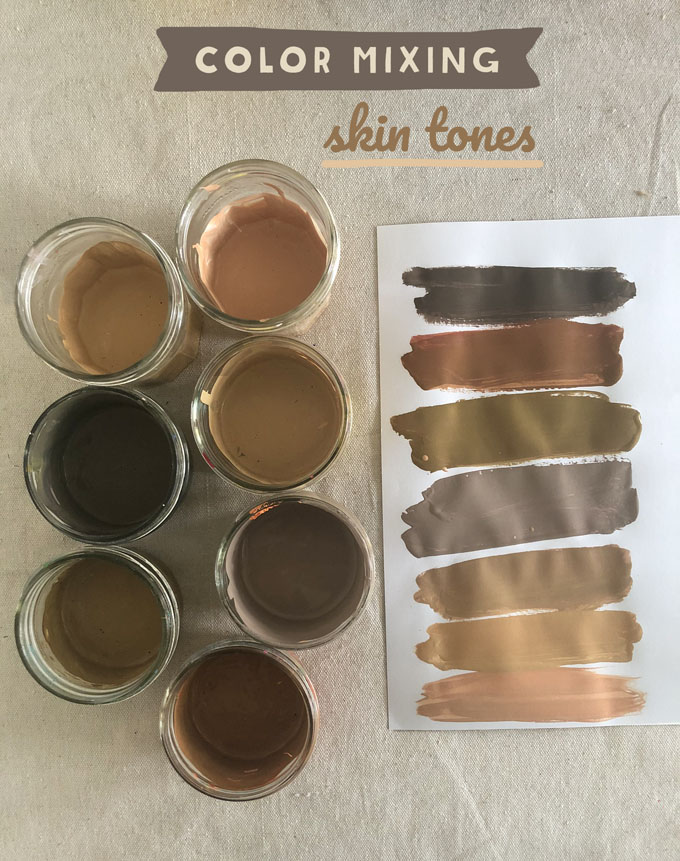
[ I am a participant in chapter programs designed to provide a means for bloggers to earn pocket-sized fees at no cost to you past linking to Amazon.com and affiliated sites. ]
Supplies for Mixing Skin Tones
~ Tempera paints (I used three primaries, plus a behemothic 32 oz white, plus regal and pink) from either Blick (pints) or Crayola (16oz)
~ Glass jam jars (I purchase Bonne Maman with the gingham hat – they are the perfect size)
~ Plastic knives for stirring
~ Muffin-meridian pan or shallow paper-thin box for storage
Scout the Mixing Skin Tones video!
This video (above) is a continuation from last week's video on color mixing where I talked most complementary colors (also called contrasting colors) on the color wheel. When mixing pare tones, I use the three primary colors and white, and then add together in drops of complementary colors depending on the shade I am trying to make. You tin mix countless, beautiful browns with this technique, and making lighter skin tones uses the same technique but with lots more than white. Keep reading for more tips!
(Click hither if you lot can't see the video above.)

How to Mix Skin Tones
1. Commencement, get your mixing station fix. I used glass jars with lids so I tin can store them, and plastic knives for mixing. The paints last for a while, upward to a calendar month. I used generally primary colors, but equally you can meet in the video I did also use a little orange and purple at times (which is technically cheating, lol, simply not actually considering purple is just red + bluish, and orange is just red + yellow!) and I used a trivial pink, too. Pink is hard to mix from primaries, and I apply a drop when making the lighter pare tones.
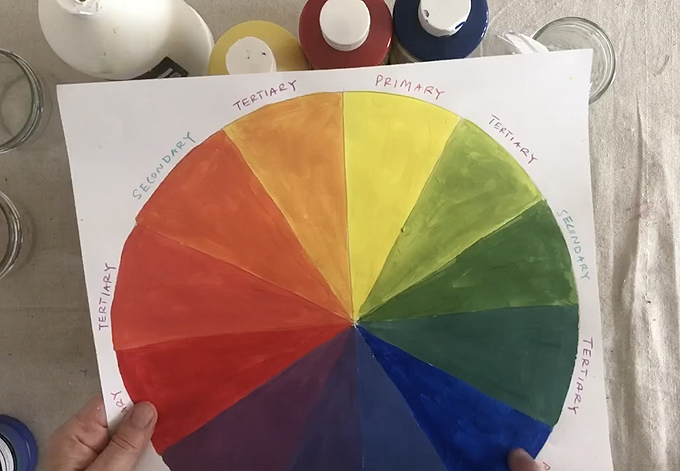
ii. In the video, I explain the concept of complementary colors. They are opposite each other on the colour wheel. The three basic sets of complementary colors are: blue + orange, scarlet + green, and yellow + purple. They all include 1 primary and ane secondary color.
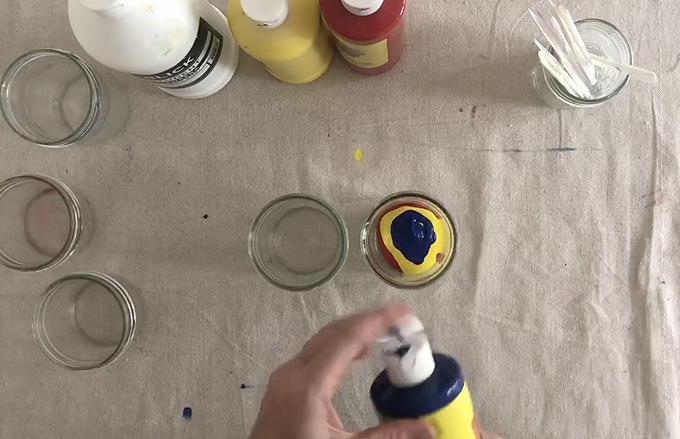
3. Get-go past putting a little chip of all iii primaries in a jar. When yous mix these together, you will find that the blue is very potent, and that all 3 primaries mix to a blue-ish charcoal. Add some white to bring out the colour a trivial and to brand it more than opaque. Now start playing effectually and making the color more than dark-brown. To do this, use your knowledge of complementary colors. If the color looks likewise blueish, add together orange. If the color looks as well red, add green, and if your color looks too yellow, add purple.
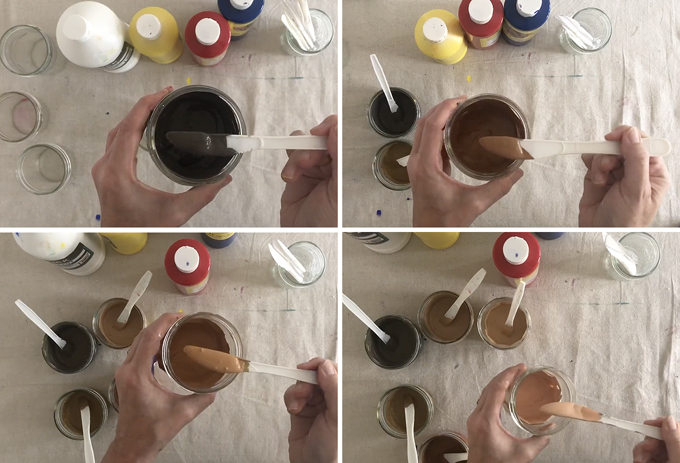
iv. Mixing skin tones is all about experimenting and playing around. Add white as you get to lighter tones. I used the orange and royal in place of using yellow + crimson and cherry + blueish. It saves on pigment, and gets you to where you're going a flake quicker.
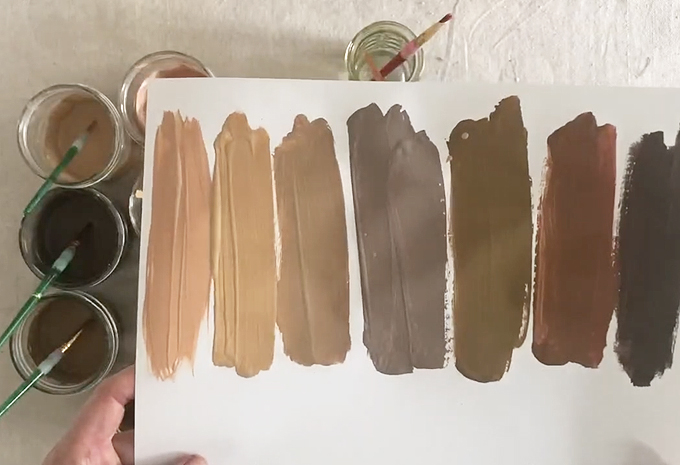
five. If you have a pocket-sized grouping of children, you can have them mix their own pare color and paint on the back of their mitt to match their tone! Call up to commencement with a modest amount of paint in your jar because the amount will keep growing as you lot add more colors. Look how cute those colors are! Yous can set out all of your browns and make rainbows, or use them to draw and paint leaves.
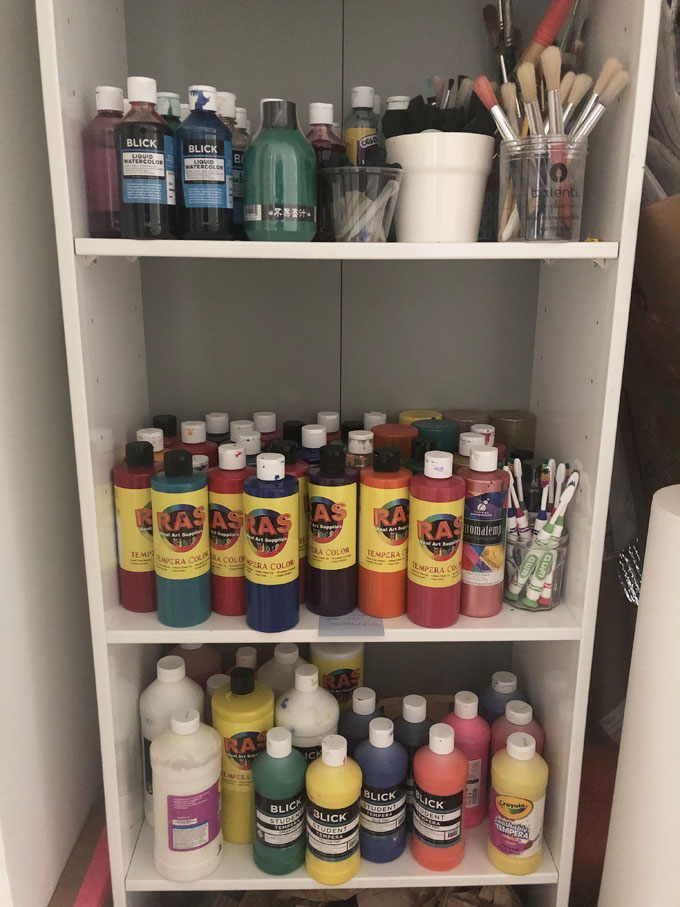
Organizing My Pigment and Fine art Supplies
I keep my paints and a bunch of other art supplies in two closets. One is purely for the pigment bottles, and the other closet is where I store the mixed paint jars.
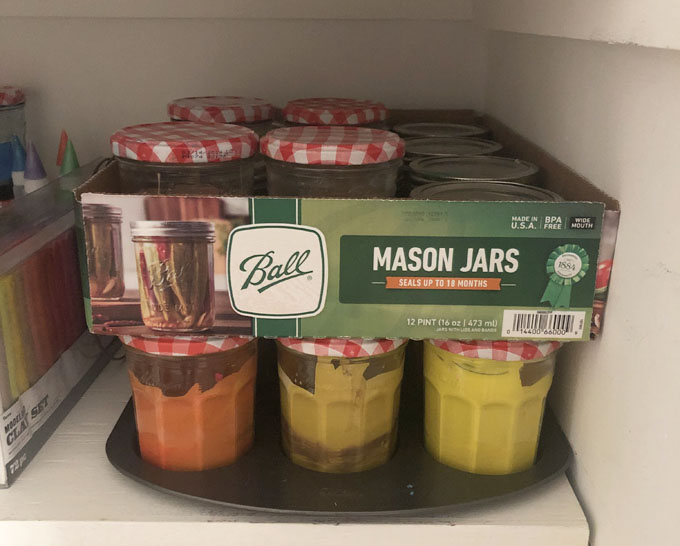
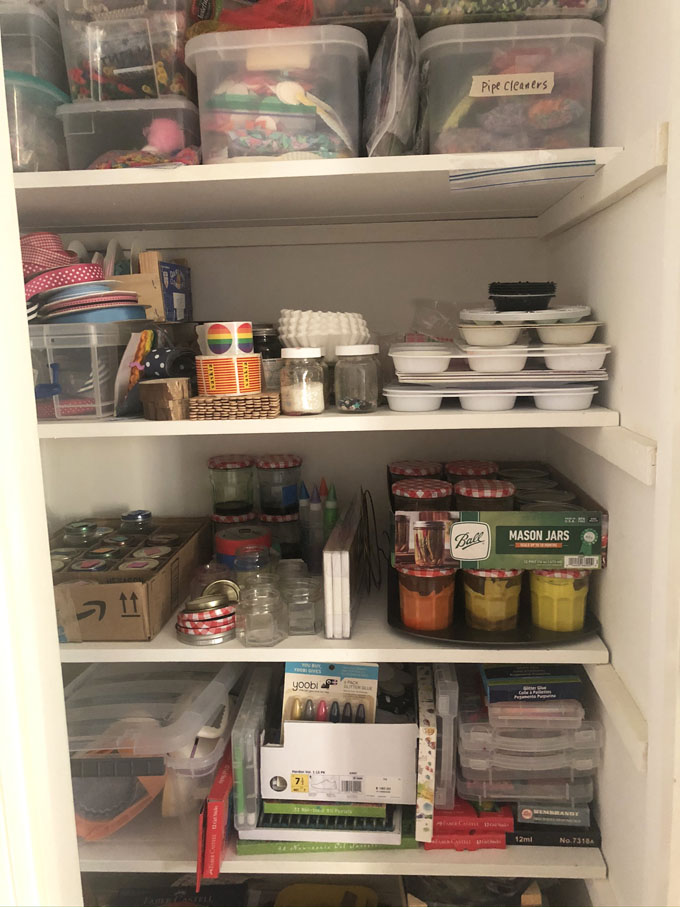
I go along my paint jars stacked which makes it easy for my fine art students to help me get them and put them abroad. I also keep other supplies in this cupboard that I don't necessarily want out on the open shelves, or that I don't have room for on the art cart. You lot can see how well it works to employ a closet. My firm weirdly has iv coat closets in the front hallway, so I use two of them for art supply storage. I too have an unabridged basement total of supplies, which I don't think I will ever show you, LOL.
Please let me know how the colour mixing goes! Tag me on Instagram at @artbarblog, or get out a comment!
xx Bar
– – – – – – – – – – – – – – – – – – – –
Did you lot like this mail service? Here are more most color theory and pigment:
Source: https://www.artbarblog.com/mixing-skin-tones-using-primary-colors/
Posted by: hongwiced1943.blogspot.com

0 Response to "How To Mix Skin Tone Paint"
Post a Comment